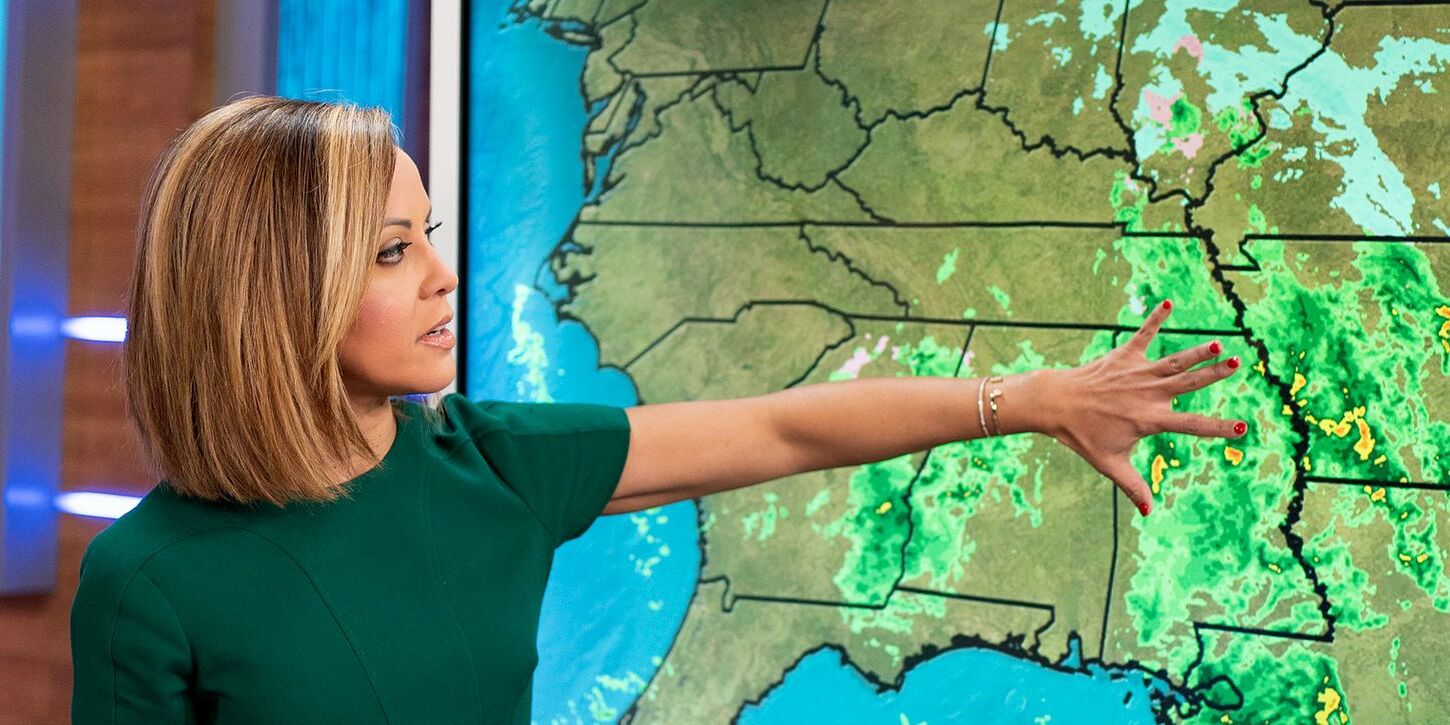
Weather radar is a game-changer in meteorology, helping us understand and predict weather patterns with remarkable accuracy. Originating from World War II technology, it has evolved into a sophisticated tool used worldwide. How does weather radar work? It uses the Doppler effect to measure the frequency shift caused by moving precipitation, allowing meteorologists to track storms, rain, and even tornadoes. Different types of radar systems, like S-band, C-band, and X-band, cater to various weather conditions. From severe weather detection to climate research, weather radar plays a crucial role in keeping us informed and safe. Let's dive into 45 intriguing facts about this indispensable technology.
History of Weather Radar
Weather radar has come a long way since its inception. Let's dive into its fascinating history.
- Weather radar technology originated during World War II to detect enemy aircraft. After the war, scientists repurposed this technology for meteorological use.
- The first operational weather radar systems appeared in the 1950s, marking a significant advancement in weather forecasting.
Basic Principles
Understanding how weather radar works can help appreciate its importance in meteorology.
- Weather radar operates on the Doppler effect, measuring frequency shifts caused by moving precipitation particles.
- This technology allows radar systems to determine the speed and direction of precipitation, providing crucial data for weather forecasting.
Types of Radar Systems
Different radar systems serve various meteorological purposes. Here are the main types:
- S-band Radar: Operating at 3-4 GHz, S-band radar is ideal for detecting heavy precipitation.
- C-band Radar: With a frequency of 4-8 GHz, C-band radar detects both heavy and light precipitation.
- X-band Radar: Operating at 8-12 GHz, X-band radar is used for light precipitation, often in urban areas.
- K-band Radar: At 12-18 GHz, K-band radar detects very light precipitation, mainly for research.
Advanced Radar Technologies
Modern advancements have significantly improved weather radar capabilities.
- Phased Array Radar: This technology allows precise control over the radar beam, enhancing resolution and accuracy.
- Dual-Polarization Radar: Using two orthogonal polarizations, this radar can distinguish between different types of precipitation, such as rain and hail.
- Dual-Doppler Radar: Employing two radar systems at different frequencies, it measures precipitation particle velocity in three dimensions for detailed storm analysis.
Key Radar Metrics
Several metrics are crucial for interpreting radar data.
- Radar Reflectivity: Measures the energy returned to the radar by precipitation particles, estimating precipitation intensity.
- Z-R Relationship: Converts radar reflectivity (Z) into precipitation intensity (R), essential for quantitative precipitation forecasting.
- Radar Beam Width: Determines resolution; narrower beams offer higher resolution but are more prone to interference.
Radar Components and Design
The design and components of radar systems are tailored for optimal performance.
- Antenna Design: Various shapes and sizes optimize performance for specific frequencies and applications. Parabolic antennas are common in weather radar.
- Signal Processing: Techniques like filtering, de-noising, and spectral analysis enhance radar signal quality and reduce noise.
Data Integration and Applications
Weather radar data is often combined with other meteorological data for comprehensive weather analysis.
- Data Integration: Radar data is integrated with satellite imagery, ground-based weather stations, and weather balloons.
- Nowcasting: Predicts immediate future weather conditions using real-time radar data on precipitation and storms.
- Severe Weather Detection: Essential for detecting severe weather events like tornadoes and derechos, aiding early warning systems.
Specific Weather Phenomena Detection
Weather radar plays a crucial role in detecting various weather phenomena.
- Tornado Detection: Doppler radar detects tornado rotation, allowing early warnings.
- Flash Flood Warning: Heavy precipitation detected by radar triggers flash flood warnings, saving lives and reducing property damage.
- Winter Storms: Detects blizzards and ice storms, crucial for winter weather forecasting.
- Hurricane Monitoring: Tracks hurricanes, especially in early formation stages, monitoring movement and intensity.
Broader Applications
Weather radar data extends beyond meteorology into various fields.
- Flood Prediction: Models use radar data to forecast flood-prone areas, aiding evacuations and infrastructure protection.
- Climate Research: Studies long-term precipitation trends, helping understand climate change impacts.
- Urban Weather: Monitors complex urban weather conditions, aiding urban planning and emergency management.
- Agricultural Applications: Predicts crop yields, detects pests, and monitors soil moisture, helping farmers make informed decisions.
Safety and Emergency Management
Weather radar is vital for safety in various sectors.
- Aviation Safety: Provides pilots with real-time weather information, ensuring safe navigation.
- Marine Weather: Forecasts storms and hazardous conditions at sea, aiding safe marine navigation.
- Emergency Management: Provides critical information during natural disasters, coordinating rescue efforts and timely warnings.
Public Awareness and Education
Weather radar data is used to educate and inform the public.
- Public Awareness: Campaigns use radar data to educate about severe weather events, reducing injury and property damage risks.
- Educational Tools: Used to teach students about meteorology and weather forecasting, making complex phenomena more accessible.
Technical Aspects
Ensuring accurate radar readings involves several technical processes.
- Radar Calibration: Adjusts the radar system for accurate readings, accounting for factors like antenna gain and frequency drift.
- Data Quality Control: Checks for errors, missing data, and inconsistencies in radar signals.
- Interoperability: Ensures seamless data exchange between different radar systems, integrating with other meteorological data sources.
Cost and Technological Advancements
Weather radar systems are both cost-effective and technologically advanced.
- Cost-Effectiveness: Provides continuous weather monitoring with minimal maintenance compared to other meteorological tools.
- Technological Advancements: Improvements like phased array antennas and dual-polarization radar enhance accuracy and resolution.
Global Cooperation and Research
International collaboration and research are crucial for weather radar advancements.
- International Cooperation: Sharing radar data across borders provides a comprehensive view of global weather patterns.
- Research Applications: Used in studying atmospheric phenomena, climate change impacts, and developing new forecasting models.
Real-Time Data and Integration
Real-time data from weather radar is critical for various applications.
- Real-Time Data: Provides immediate weather condition updates, crucial for decision-making in fields like aviation and agriculture.
- Satellite Integration: Combines radar data with satellite imagery for a comprehensive weather view, detecting large-scale patterns.
Complementary Data Sources
Weather radar data is often validated and complemented by other sources.
- Ground-Based Stations: Provide complementary data, validating radar readings and improving forecast accuracy.
- Weather Balloons: Collect atmospheric data, integrated with radar data for detailed atmospheric condition views.
- Automated Weather Observing Systems (AWOS): Provide real-time ground station data, used with radar data for accurate forecasts.
Future Developments
Exciting advancements are on the horizon for weather radar technology.
- Future Developments: Artificial intelligence and machine learning will enhance data processing and improve forecasting accuracy.
The Future of Weather Radar
Weather radar has come a long way since its WWII origins. From detecting enemy aircraft to tracking severe weather, its evolution has been remarkable. Modern advancements like phased array radar and dual-polarization radar have significantly improved accuracy and resolution. These technologies help in everything from tornado detection to climate research.
Weather radar isn't just for meteorologists. It's crucial for aviation safety, agriculture, and even emergency management. Real-time data helps pilots navigate safely, farmers make informed decisions, and emergency responders coordinate efforts during natural disasters.
Looking ahead, the integration of artificial intelligence and machine learning promises even more precise forecasting. As technology continues to advance, weather radar will remain an indispensable tool in understanding and predicting weather phenomena. It's clear that weather radar will keep playing a vital role in our daily lives and future planning.
Was this page helpful?
Our commitment to delivering trustworthy and engaging content is at the heart of what we do. Each fact on our site is contributed by real users like you, bringing a wealth of diverse insights and information. To ensure the highest standards of accuracy and reliability, our dedicated editors meticulously review each submission. This process guarantees that the facts we share are not only fascinating but also credible. Trust in our commitment to quality and authenticity as you explore and learn with us.


